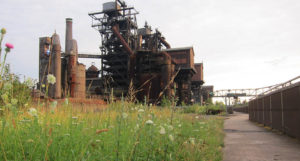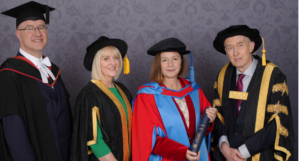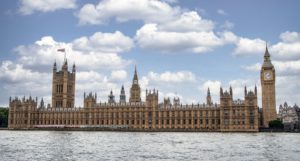Feature: Professor Martin Siegert
Professor Martin Siegert joined the University of Exeter in November as its first Deputy Vice-Chancellor for Cornwall. A decorated polar scientist, Martin reveals how his path into higher education – and to Antarctica – was anything but a traditional one.

Professor Martin Siegert
On the outskirts of a Suffolk village, Martin Siegert huddled inside a small hut as the freezing February rain speared against it. Working with a team of labourers on the construction of a by-pass, Martin had grown accustomed to the long hours and gruelling nature of the work – one that paid little heed to the English elements.
But on this day, Martin felt the need to take stock of where his life was heading. With no more than a vague plan to be an accountant, he recalled the words of his former university tutor, who told him he should devote his career to research. And with that, Martin reached into his bag and took out a copy of New Scientist which he’d kept for a quiet moment. Opening the magazine, he saw the advert that was to change his career, his life, and arguably, our understanding of an entire continent.
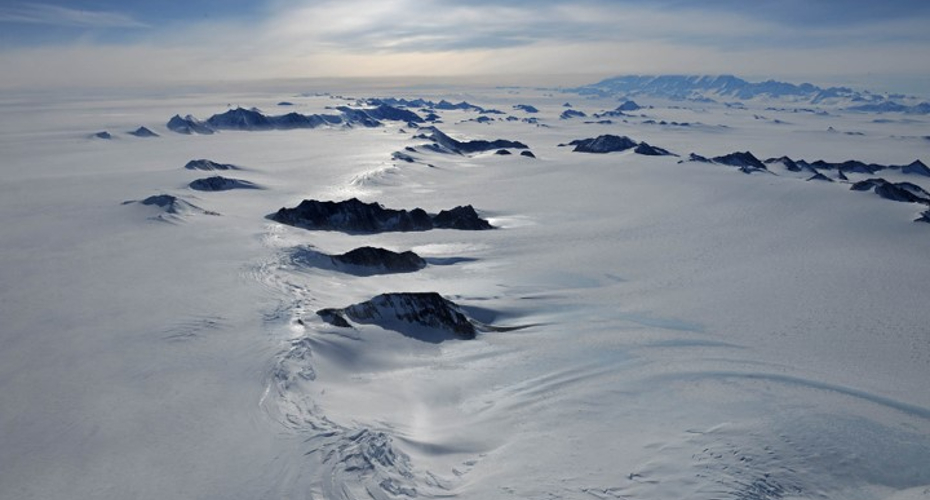
Professor Martin Siegert has travelled far in the three decades since that day – figuratively and geographically. An internationally renowned glaciologist – or, in layman’s terms, an expert in ice – he’s authored more than 300 research papers and helped pioneer an aerial surveying technique that has charted almost half of the continent of Antarctica. Through this, and other work, he is credited with the discovery of more than 600 subglacial lakes – massive bodies of water locked several kilometres beneath the surface of the polar ice sheet, and reservoirs of yet untapped scientific knowledge.
This expertise and leadership in his field has paved the way for senior positions at key research institutions, including as Co-Director of the Grantham Institute at Imperial College London, as well as being the Chair of the UK’s Antarctic and Arctic Committee. Now, the first Deputy Vice-Chancellor at Exeter to have a strategic remit for its Cornwall operations, Martin is breaking new ground once again.
“This is something of a recurring theme for me – starting positions that are new for the institution,”
he says from his office on the Penryn campus.
“You plug yourself into that fast-moving train and try to get up to speed as best as you can – and that starts by meeting lots of people, listening and learning. For a long time, I have followed the progress of Exeter – it has built itself an amazing reputation for climate science over the last 10-15 years and has recruited some brilliant people. I know several academics here through polar science, so it has felt quite a comfortable transition. And the welcome I have received has been truly lovely.”
For Martin, the very nature of that welcome strikes a deeper chord. As someone who has experienced first-hand what it is like when an education system cannot open doors for its young people, he is determined to ensure that Exeter is a university for everyone in Cornwall. Part of a demographic shift in the 1960s and 70s that saw many families receive financial support to relocate from London to surrounding counties, Martin had been enrolled in what he describes as a “failing comprehensive school” in Suffolk. Like many in the area, he said, it offered “no clubs, no sport, no extracurricular activity and often no actual teachers”. And with no university in the immediate locale, most young people were left with the simple choice or either leaving the area or abandoning any thought of higher learning.
“I think it represented a colossal socioeconomic failure, a generation of children with little to no guidance or appreciation of the pathways that were open to them,”
he says.
“I only made it due to luck and saying ‘yes’ to things – and that is why I go to schools and tell the children that I can see myself in their position. For Cornwall, we have an amazing university now, so young people can choose to remain here and study. But we need to be giving them – children from all backgrounds – the tools and advice they need to pursue their aspirations.”
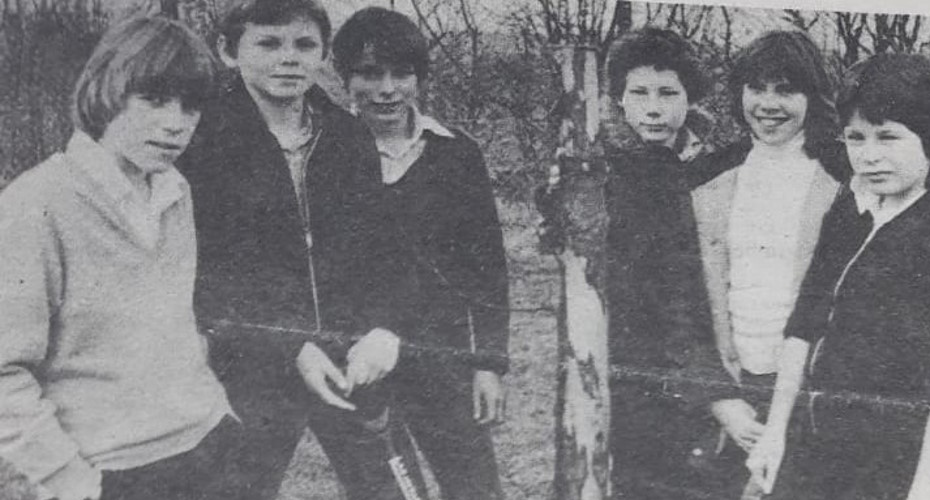
It was through mathematics that Martin was able to advance his, such as he had any at that stage. Fortunate that maths was one of the few areas in which his school did excel, Martin secured good A Level grades and with it a place on a geophysics degree at Reading – one of just five pupils in his year to progress to university. But though he thrived in this new environment, he gave little consideration as to what might follow. Indeed, when his tutor asked him in his final year what he wanted to do, he replied “maybe become an accountant?” The academic was horrified.
“He told me that I should be thinking about doing research,”
Martin says.
“I really didn’t know what that meant in a career context, but he said that I ought to consider applying for a PhD.”
But six weeks before he was due to sit his final examinations, all such questions about his future were curtailed by the sudden and tragic passing of his father. Remarkably, given the circumstances, Martin “soldiered on” and secured a good degree, but then understandably felt he needed to time off to be close to his family.
“I went back home and ended up in road construction – I was a geotechnical advisor, which was a fancy title for labourer,”
Martin says smiling.
“These hands,” he adds, holding them aloft, “have definitely done a decent day’s work. I got to know a different side of life, a hard life, where you work all the hours that it’s light. I learned a lot during that year. Looking back, that time was transformative.”
And so it was that Martin came to be sitting in that small cabin near the village of Long Melford during a particularly violent winter downpour. Picking up that copy of New Scientist, his eyes alighted on an ad for a PhD at Cambridge under the supervision of Julian Dowdeswell, and while he wasn’t entirely sure what ‘glaciology’ was, he had a pretty good idea it suited him. Sure enough, by the end of that year, in 1990, he’d taken his first steps towards a career in research – and towards Antarctica.
The focus of the PhD was on numerical modelling of ice sheets in the Eurasian north during the last ice age. Following that, in 1993, he undertook postdoctoral work accessing a wealth of data that had been gathered through painstaking geophysical fieldwork in the 1970s. Most of the scientists who had led on that data collection had since moved on, and Martin realised that the advancement of computer technology presented him with an opportunity to ‘rediscover’ their work.
“I picked up the baton and ran with it!”
he recalls.
“I used digitisation techniques that were around at the time to adapt the analogue data, and from that, employed data analysis to answer some interesting glaciological questions like, ‘Where are the subglacial lakes?’; ‘What is the past rate of ice accumulation?’; and ‘What is the ice and climate history of Antarctica?’.”
It transpired that Martin did indeed have an aptitude for research, and he moved serenely to a lectureship at Aberystwyth. There, he underwent a “baptism of fire” when it came to lecturing – teaching classes of 200 undergraduates with little training under his belt – but also began to build up his research portfolio. And people were taking notice.
By 1999, he’d been recruited to Bristol for a lectureship in Physical Geography, which by 2003 became a personal Chair, before moving to Edinburgh to head up its School of Geosciences in 2006. But arguably as important, Martin had also come to the attention of one Dr Donald Blankenship.
An American glaciologist based at the University of Texas, Blankenship had learned of Martin’s research at Cambridge and asked if the pair could meet up. On a trip to Wisconsin, to deliver a talk, Martin met his counterpart, and there, amid the overpowering smell of the local farming industry, Blankenship proposed the pair launch a new geophysical programme to survey the unmapped portion of Antarctica – equivalent to half of its landmass. Martin agreed but knew that that if it was to stand a chance of success, he would need to radically revise his approach to research.
“I was accustomed to six-month projects,”
he says.
“But I was about to learn an important lesson – one that has remained with me through my experiences in higher education. If you want to achieve anything of significance, you need time, which in this case was ten years. A decade to put the team, funding, and logistics in place, all before we could start the data collection.”

The upshot of this long-term approach was that ICECAP, their collaborative programme, finally commenced fieldwork during Christmas 2008. And standing on the shoulders of those who had come before them, they had developed a new approach to measuring the thickness of the ice – one that would transform the entire scientific field.
“By the 1970s, we knew the shape of Antarctica, we knew the surface elevation, but we had no idea about the thickness of the ice in some places – we barely understood whether it was a single continent,”
he says.
“This knowledge had been acquired the hard way, using seismic techniques that would take several days just to achieve a single data point. With radar, however, you could obtain multiple recordings per second, and so through geophysics, we could dramatically increase the rate of data acquisition – by five orders of magnitude. I can think of very few other paradigmatic shifts that have been as great as that.”
To demonstrate the technique, Martin walks over to his bookcase and retrieves a model of a Basler-76 aeroplane, a 1940s-era workhorse often used in snowy environments due to it being able to fit skis on its wheels. Tracing his finger along the contours of the wing, he explains how the ICECAP team converted a similar aircraft to carry a “full geophysical payload” with 60 MHz radar antennae on each wing.
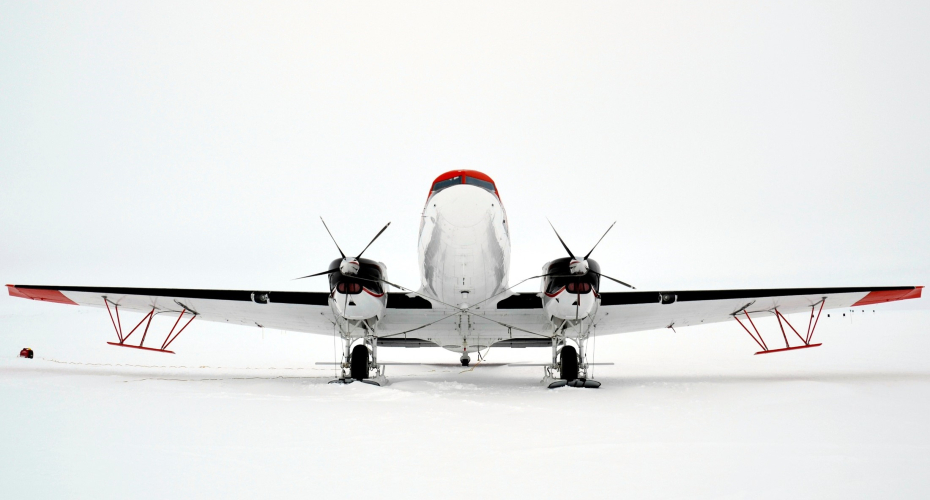
“The great thing about very cold ice is that radio waves pass straight through it – they go down into the ice sheet and bounce off the bottom,”
he explains.
“And from the travel time of that radio wave, you can calculate how thick the ice is. With the fuel capacity of the Basler, it was possible to cover large areas of the territory.”
Over the next three summer seasons, the team mapped vast swathes of land – and their success drew new partners – from Australia and China – extending the longevity of ICECAP across a further nine seasons and evolving it to the point where, today, it is a genuine ‘coalition of the willing’.
Alongside this work, a second Antarctic programme has run, which is seeking to become the first to obtain samples from one of those iconic subglacial lakes. It’s a project driven by pure curiosity, says Martin, a mission to discover what sort of life might be found in these reservoirs that have been entombed beneath kilometres of ice for millions of years. And by recovering sediment samples, it might also reveal how Antarctica – and the planet – has changed over time.
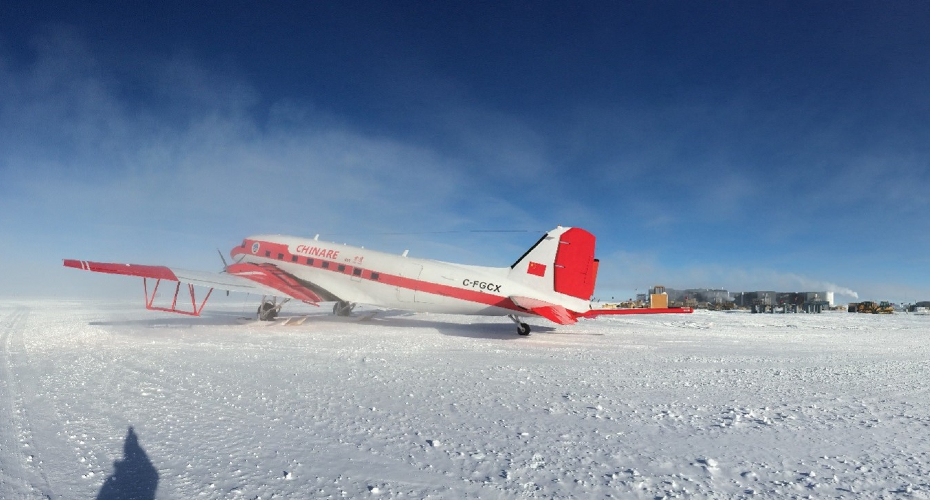
But despite drawing together another “brilliant team”, including the British Antarctic Survey (BAS), they’ve found that the continent isn’t yet ready to give up its secrets. Specifically, in their NERC-funded expedition of 2012, the hot water drill that was employed to inject the probe down into the lake was unable to reach the required depth. It meant that BAS has had to return to the drawing board to refine the drill, and pandemics and funding complications have prevented their return. Despite a decade of delay, however, Martin remains philosophical.
“When you set out to accomplish something that has never been done before, you accept that that there’s probably a good reason why it hasn’t!”
he says.
“Every single drill ever used in Antarctica has failed the first time it’s been deployed, and I can tell you, it was such a hard call to make when it became clear that we were not going to succeed in 2012. All that effort to get there, all those great ideas, and it wasn’t enough. That’s the nature of cutting-edge research. It’s not all successes and writing papers – but I believe the best research happens when you take risks; when it’s challenging.”
You’d assume that these grand projects represent the highlight of Martin’s career. Or perhaps it might be the years he spent at Imperial – post Edinburgh and a brief return to Bristol – where he helped to transform the fortunes of the Grantham Institute, in terms of funding, philanthropy and student recruitment. Or could it be for the prestigious Martha T. Muse Prize for Excellence in Antarctic Science and Policy, which he was awarded in 2013? But no; when you ask him what has given him the greatest pride, he talks of leading two innovation centres on climate change, and the novel taught postgraduate programmes in business that he has helped to establish. For Martin, it is the fusion of science and business that heralds the way forward for the planet.
“Making a difference to the climate agenda does not require more glaciologists,”
he says candidly.
“It needs more engineers, more people in business innovation, and climate finance. It’s about understanding how to raise the finance and investments that are going to be needed for that Net Zero transition.”
Martin sees the University playing an important role in the transitions, and for its Penryn and Truro operations to support the Duchy’s own ambitions for a greener future. He believes universities can and should do more, as “agitators for change” and is keen to work collaboratively with as many people as he can. Given his track record of teamwork, would he have it any other way?!
Our interview draws to a close, but there is one thing left to ask; one subject yet to be explored. What is it like in Antarctica? How does one comprehend such a hostile environment, so alien to anything we experience in the usual course of life? And how do you rationalise, say, landing in an aeroplane on a runway of blue ice, when your only cargo is kerosene and your good self?
“It’s a thrilling experience, an adventure – and some people are really driven by that and feel that they ‘need’ to be there,”
Martin says.
“I’ve never felt that way, it’s not a personal thing. But when you go, it’s a real privilege. There’s always a moment, when you first step out of the plane, when you feel this huge exchange of air and you remember just how cold it is. But you do get used to that. What you don’t, though, is the light – the reflectivity of the snow is so powerful. After a while, it really begins to mess with your head.”
Martin pauses and looks out the window. The sun is streaming in through the blinds. On a cold and crisp day in Cornwall, beneath cerulean blue skies, it’s certainly not Antarctica. But then maybe, where on Earth is?
“You know, when you look around, it’s the closest you come to being on another planet,”
he finishes.
“It has been such a privilege to have been involved in its exploration from a science perspective. When I look back to that little kid on the side of the road, he would not have thought he could have done anything like that!”


